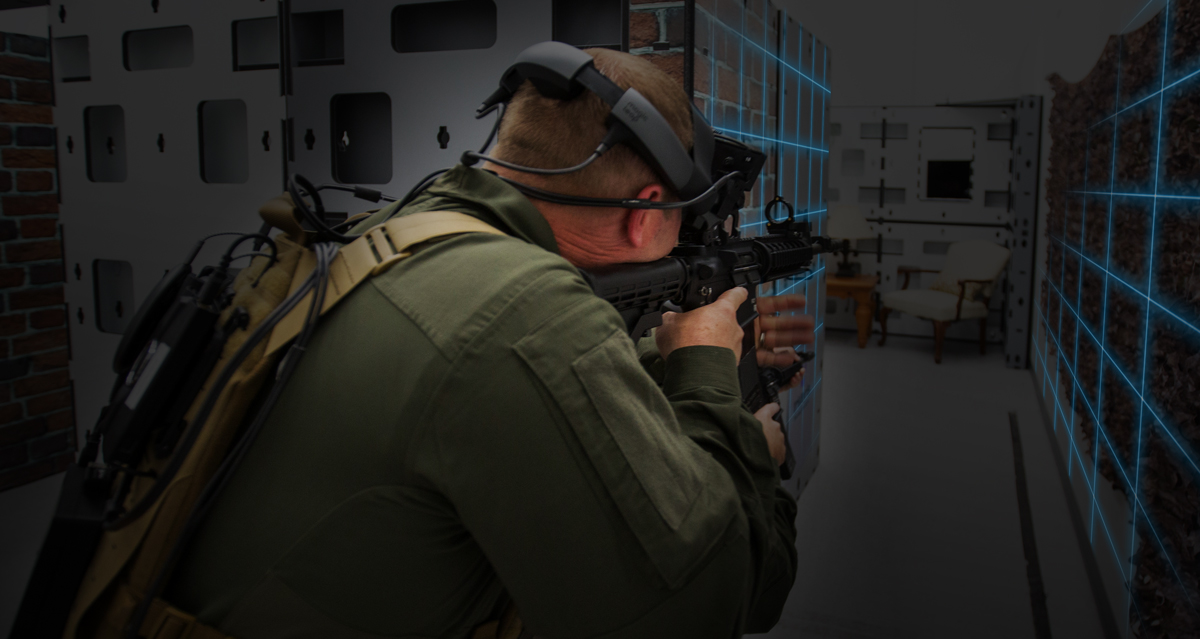Category: Military18.07.2025

Today’s public safety officers face new dangers on a daily basis that require more advanced forms of training. In addition to these ongoing challenges, traditional public safety drills or scenarios are becoming increasingly costly to provide and don’t always effectively simulate the dynamic situations officers are likely to face in the field.
In an effort to provide more effective training solutions for public safety officers, newer technologies such as virtual reality (VR) and artificial intelligence (AI) are now being regularly used to enhance training.
The solutions provide a more immersive and risk-free environment that allows officers to refine their decision-making skills while receiving personalized training sessions, ultimately helping to keep them and the public safer in the field.
While all public safety agencies use similar formats when providing their recruits with firearms and tactical training, these formats have certain limitations.
Unfortunately, many one-size-fits-all training models are increasingly out of alignment with modern demands placed on public safety officers. While on paper, these training formats help provide a base-level training that’s important for ongoing development, often the “real training” is left on the field.
However, this approach doesn’t necessarily provide the more personalized tactical training that may be necessary for an individual officer and can lead to dangerous assumptions in the field, putting officers in unnecessary danger.
Outside of the effectiveness of the training itself, traditional programs designed to support officer development are also incredibly resource-intensive. They can require a significant amount of agency spending on fire ranges, ammunition, and training staff to support. These added costs can make it difficult for agencies to prioritize other important operational elements to improve their day-to-day efficiencies.
The introduction of VR technology into agency firearms training has led to significant improvements in officer training. This is primarily due to:
VR headsets help place trainees in real-life situations that accurately mirror the environments they’re likely to encounter when on shift. This creates a much more immersive experience that can help replicate the stressful and unique circumstances they’ll face while still needing to make split-second decisions.
These highly realistic digital environments can be designed to mimic a routine traffic stop that turns into an active shooter event, a robbery, or how to interact with eyewitnesses when responding to a call.
Being able to train officers effectively without putting them in harm’s way is a major benefit of VR technology. Not only that, but it gives them a cost-effective way to repeat important exercises while helps officers actually retain what they’ve learned.
Running VR exercises regularly helps officers build crucial muscle memory, which can help them stay calmer and more focused in high-pressure situations. This translates to fewer officer injuries and more compliant performance.
Another benefit of using VR technology in officer training situations is that it can be customized to all types of environments. For example, responding to situations in daylight can be significantly different from responding in low light or nighttime situations. This gives officers the ability to see how environmental factors can and should influence their approach to new situations.
AI technology has been adopted by nearly every industry, and public safety is no exception. There are numerous ways that AI is being utilized to enhance training effectiveness for both recruits and seasoned officers.
Because of the processing power that AI-powered analytics solutions provide, the technology can be used to help shape new learning paths for each individual officer. This can include analyzing field performance metrics like body-cam footage and incident reports to recommend specific training courses for officers to help them improve how they approach similar situations moving forward.
AI tools can provide real-time, unbiased feedback to officers and their trainers during simulations on the accuracy of decisions being made. For example, when practicing how to interview witnesses, AI-enabled VR sessions can incorporate more natural responses from victims or potential suspects, creating more dynamic reactions or subtle visual cues for officers.
In addition to creating more seamless training experiences, AI-enabled training modules can also provide comprehensive reports for officers, helping instructors focus on specific areas of needed improvement.
VR and AI technology can be combined to create even more immersive and impactful simulation-based training for officers.
In VR environments, AI technology can help to drive unscripted conversations with different digital individuals that react to what officers say and how they say it. This can force them to adapt in real-time, providing a much more authentic training experience.
This also helps instructors focus more on officer decision-making, rather than managing all aspects of the training scenario.
AI-powered training systems help to objectively track trainee performance while creating unbiased records of their skills and decision-making. This ensures that all training evaluations are handled ethically and offer a fully transparent review of performance.
This level of integration ensures that any formal reviews are handled consistently and fairly across all types of agencies, helping to reduce confusion when trainees are asked to retake training courses.
VR and AI-enabled training solutions help to extend the value of training beyond a firing range. It can drastically cut costs on ammunition and travel, while also ensuring officers have much more effective training on when and how to use their firearms effectively. This helps to create much better community relations with residents, knowing that officers have been trained much more effectively before being sent into the field.
As public safety agencies continue to face growing risks in their communities, it’s essential that officers receive adequate training to keep the public, fellow officers, and themselves safer.
By combining VR technology and AI-powered training platforms, agencies cannot only help their officers make better decisions in the field but also help curb their training costs and improve the scalability of their operations.